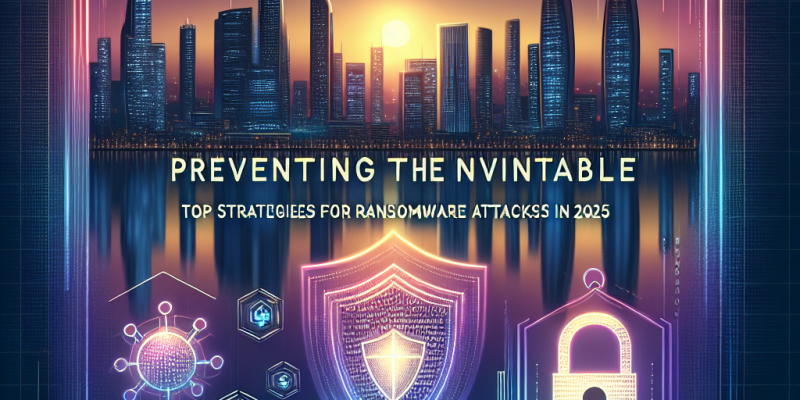Preventing the Inevitable: Top Strategies Against Ransomware Attacks in 2025

As we step into 2025, ransomware attacks continue to be a significant threat to individuals and organizations worldwide. With cybercriminals using more sophisticated techniques, it is crucial to be proactive in defending against these malicious attacks. Here are some effective strategies to help protect your data and systems from ransomware in 2025.
1. Regular Software Updates
One of the simplest yet most effective strategies is to keep all software up to date. Regular updates patch vulnerabilities that hackers often exploit. Ensure that your operating systems, applications, and antivirus programs are always running the latest versions. Enable automatic updates whenever possible to minimize the risk of manual oversight.
2. Comprehensive Data Backup
Backing up your data is vital. Regularly create backups of your important files and store them in multiple locations, including external drives and cloud storage. This way, if you fall victim to a ransomware attack, you can restore your data without paying the ransom. Ensure that your backup systems are secure and not directly connected to your main network to reduce exposure.
3. Employee Training and Awareness
Human error often plays a critical role in successful ransomware attacks. Providing cybersecurity training for your employees is essential. Teach them how to recognize phishing emails, suspicious links, and other common tactics used by cybercriminals. Routine training sessions can help keep awareness high and foster a culture of security within the organization.
4. Implementing Strong Access Controls
Limiting access to sensitive data is an effective defense against ransomware. Use role-based access controls, allowing only authorized personnel to access specific files and systems. Implement multi-factor authentication (MFA) to add an extra layer of security. This measure can significantly reduce the chances of unauthorized access.
5. Employing Advanced Threat Detection Tools
Investing in advanced cybersecurity tools can help in early detection of threats. Solutions such as artificial intelligence and machine learning can identify unusual behavior in the network, potentially signaling an impending ransomware attack. These tools can alert your IT team to take action before damage occurs, offering a proactive approach to cybersecurity.
6. Developing an Incident Response Plan
No organization can completely eliminate the risk of a ransomware attack. Therefore, having an incident response plan is crucial. This plan should outline the steps to take in the event of an attack, including communication strategies, containment measures, and recovery procedures. Regularly review and practice this plan to ensure your team is prepared.
7. Cyber Insurance
In today’s digital landscape, cyber insurance can be a worthwhile investment. This insurance helps cover the financial losses associated with a ransomware attack, such as data recovery costs and business interruption. While it does not prevent an attack, it can provide a safety net, allowing you to focus on recovery rather than financial devastation.
Conclusion
As ransomware attacks become more prevalent and sophisticated in 2025, employing a multi-layered defense strategy is essential. By keeping software updated, regularly backing up data, training employees, implementing strong access controls, and utilizing advanced detection tools, you can significantly reduce the risks. Furthermore, preparing an incident response plan and considering cyber insurance can position your organization to better handle any potential attacks. By being proactive, you can protect your valuable data and ensure business continuity in the face of these challenges.














